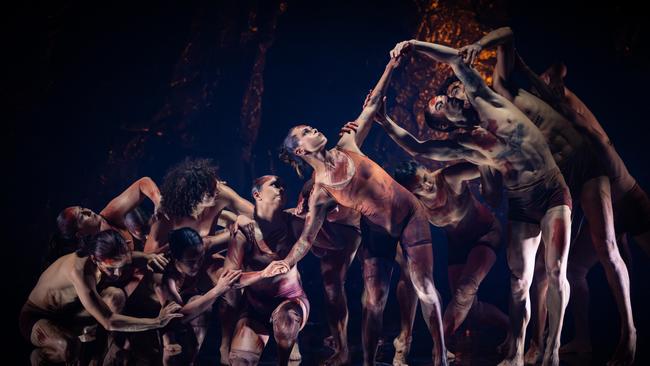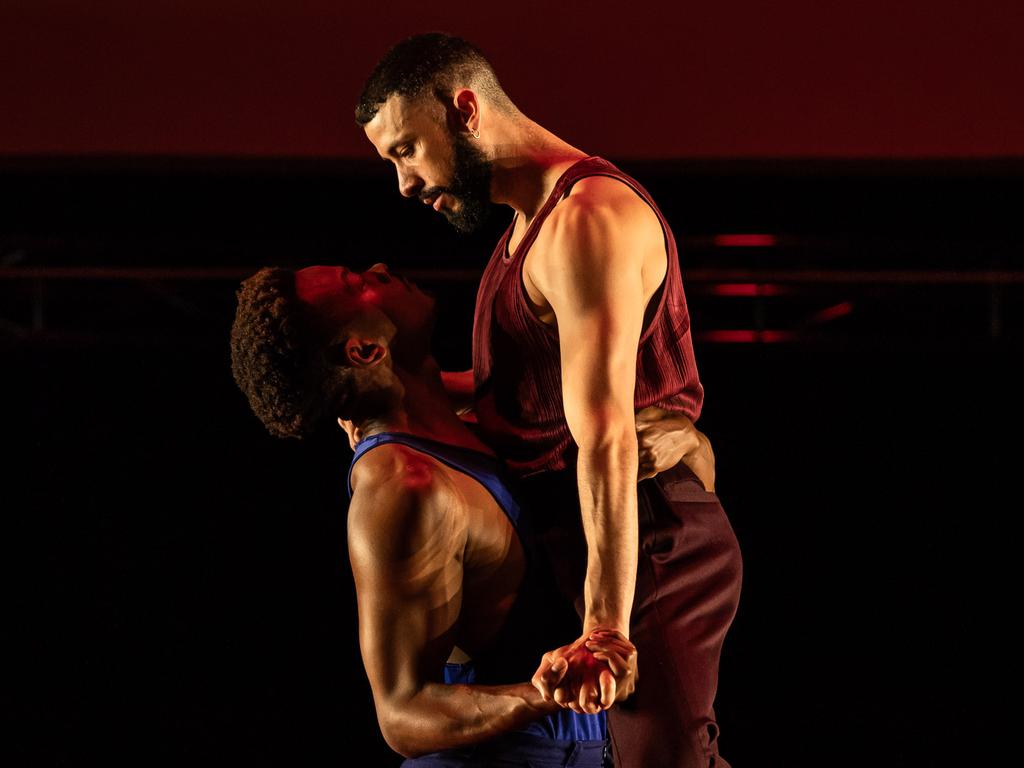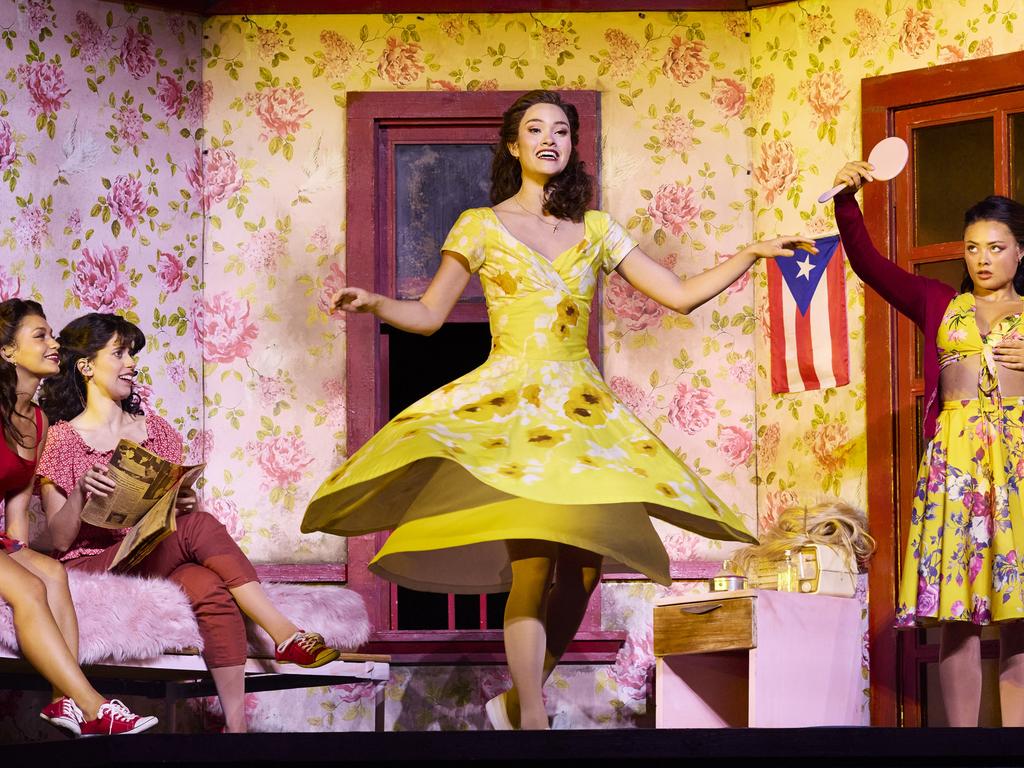Bangarra reaches across ditch, and for stars, on new work Horizon
Bangarra’s dancers are a formidable group, and they shine here, even against the backdrop of some questionable creative decisions.

When Bangarra Dance Theatre takes to the stage it is, without fail, in a spirit of generosity. That was true under the long-standing leadership of Stephen Page and feels true with Frances Rings, who took over the artistic directorship last year.
The company’s work enlarges and enriches our understanding of First Nations history, culture and philosophy. Most remarkably, there is always a sense of hope even in the darkest subjects and there’s always great beauty in the dance and its staging.
Bangarra returns again and again to the long view – to a depiction of humankind as part of an ancient, eternal but evolving cosmos. It’s something that could make the viewer feel small but somehow never does. We’re all together in this numinous immensity.
Horizon continues this theme although in a perhaps over-generous way.
For the first time Bangarra has extended its hand across the ditch and the main event is a densely packed two-part work choreographed by leading Aotearoa New Zealand dance figure Moss Te Ururangi Patterson alongside former Bangarra dancer Deborah Brown.
Despite differences in detail the concerns are similar: the need to remember the past, devotion to place and reverence for female power.
They are broad ideas brought together under the umbrella title The Light Inside, a lovely but aptly general phrase. There’s a lot going on in a somewhat formless work that nevertheless looks fabulous, is packed with wonderful dancing, is often exhilarating and frequently poetic.
Aural and visual riches are in abundant supply from composers Steve Francis and Brendon Boney, lighting designer Karen Norris, costume designer Jennifer Irwin and set designer Elizabeth Gadsby, whose reflective floor cleverly supports The Light Inside’s two sub-headings, Salt Water (that’s Brown’s section) and Fresh Water (Patterson’s).
A short finale, Shimmering Water, brings the two waters together in a touching moment of peace and serenity. The intention there is absolutely clear; not so much elsewhere as scene after separate scene unfolds. There are programs for The Light Inside freely available and the wise patron will bone up beforehand.
It is clear, however, that although many of the dancers have joined Bangarra only in the past year or so they are a formidable group.
Their haka (challenge) in Patterson’s The Lake of One Hundred Winds section was phenomenally strong. Also standing out were Lillian Banks in the Blue Star solo in Salt Water, Chantelle Lockhart in The Arrival section of Fresh Water and Daniel Mateo in everything.
Horizon had a curtain-raiser in Kulka, choreographed by Sani Townson and lasting just 20 minutes.
It has a belter of a section depicting the Crocodile God, inspired by traditional dances of Townson’s Torres Strait clan and danced by the dynamite trio of Lucy May, Bradley Smith and Kallum Goolagong.
Elsewhere Townson gives a good sense of the light, fleet Saibai Island style of dance, with Kassidy Waters a vivid presence. The last section, Adrenaline, is where Townson’s frequent use of unison delivers most bang for its buck.
It’s not Townson’s fault that Kulka’s presence feels unnecessary. It was first seen last year in Bangarra’s studio program Dance Clan and clearly Rings wanted to put it on the main stage.
It would be better served in another context. The performance would have been sharper if focused entirely on The Light Inside.
Horizon. Bangarra Dance Theatre. Choreography by Moss Te Ururangi Patterson, Deborah Brown and Sani Townson. Drama Theatre, Sydney Opera House, June 13. Tickets: $99-$119. Bookings: Online and 02 9250 7777. 110 minutes including interval. Sydney until July 13; Canberra, July 18-20; Brisbane, August 7-17; Melbourne, August 28-September 7.





To join the conversation, please log in. Don't have an account? Register
Join the conversation, you are commenting as Logout